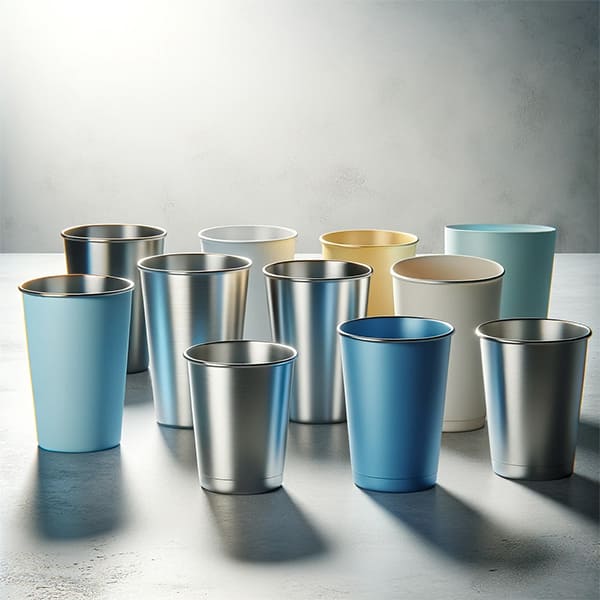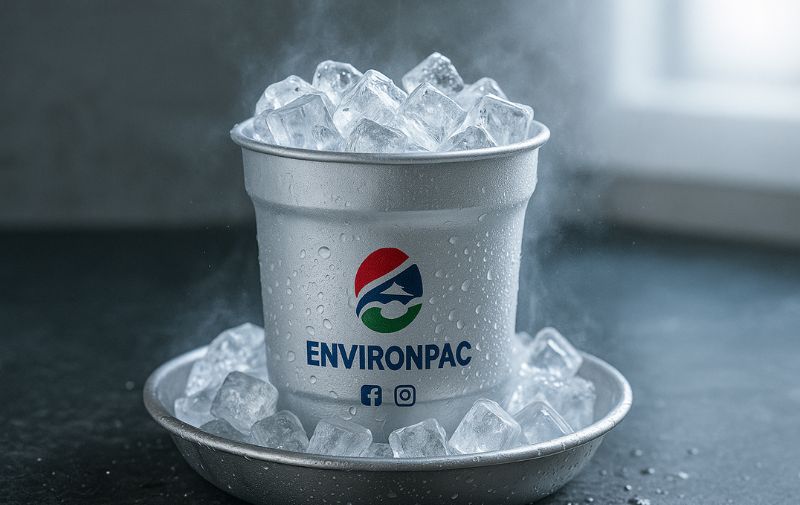Table of Contents
When it comes to choosing materials for our daily use items, especially those that we dispose of after a single use, it’s crucial to consider their environmental impact. As the owner of Solaranook, a company dedicated to sustainable living, I often get asked about the eco-friendliness of various products. One common question is: Are disposable aluminum cups eco-friendly?
Aluminum is indeed an eco-friendly choice for disposable items, primarily due to its recyclability and durability. Unlike many other materials, aluminum can be recycled indefinitely without losing quality, significantly reducing the environmental footprint over its lifecycle. In this post, we’ll explore in detail why disposable aluminum cups are a sustainable option and discuss the factors that contribute to their eco-friendliness.
Understanding the full scope of this issue is essential not only for consumers but also for businesses looking to make responsible choices. So, let’s break down the key aspects to consider when assessing the eco-friendliness of disposable aluminum cups.
How Does Aluminum Production Impact the Environment?
In my years at the helm of Solaranook, delving deep into sustainable materials, I’ve gained a nuanced understanding of aluminum production and its environmental impacts. It’s a complex issue, with both positive and negative aspects. Let’s explore this in detail, drawing from my professional experience and research.
The Initial Stages of Aluminum Production
Extracting Bauxite Ore
The journey of aluminum begins with bauxite mining, and this is where some environmental challenges arise. I’ve visited several mining sites and seen how this process can disrupt natural landscapes. According to environmental impact assessments, land degradation and biodiversity loss are significant concerns here.
Refining Bauxite into Alumina
After mining, bauxite is refined into alumina, a process that I’ve learned is both water-intensive and generates waste products like red mud. Managing these byproducts is crucial to minimizing environmental harm, as highlighted in several industry reports.

The Energy-Intensive Nature of Aluminum Smelting
The Hall-Héroult Process
The next phase, smelting alumina to create aluminum, is highly energy-intensive. Through my collaborations with industry experts, I’ve understood that this stage accounts for a significant portion of the aluminum industry’s carbon emissions, as evidenced by data from the International Aluminium Institute.
Energy Sources and Emissions
The type of energy used in this process greatly influences its environmental impact. In my professional engagements, I’ve advocated for the use of renewable energy in aluminum smelting, which can considerably reduce its carbon footprint, a view supported by research in renewable energy journals.
Balancing the Scales
Innovations and Improvements
Despite these challenges, it’s heartening to see innovations in the industry aiming to reduce environmental impacts. My involvement with sustainable development projects has shown me that advancements in mining practices and smelting technologies are making aluminum production more eco-friendly.
The Role of Recycling
Moreover, the recyclability of aluminum plays a key role in offsetting the environmental impacts of its production. As we’ve implemented at Solaranook, promoting and participating in aluminum recycling can significantly reduce the demand for primary aluminum, thereby lessening the overall environmental burden.
To summarize, the environmental impact of aluminum cup is a topic I’ve engaged with extensively in my professional journey. While it presents certain challenges, ongoing improvements and the recyclability of aluminum offer pathways to mitigate these impacts. At Solaranook, we are committed to these sustainable practices, recognizing their importance in our shared environmental responsibility.
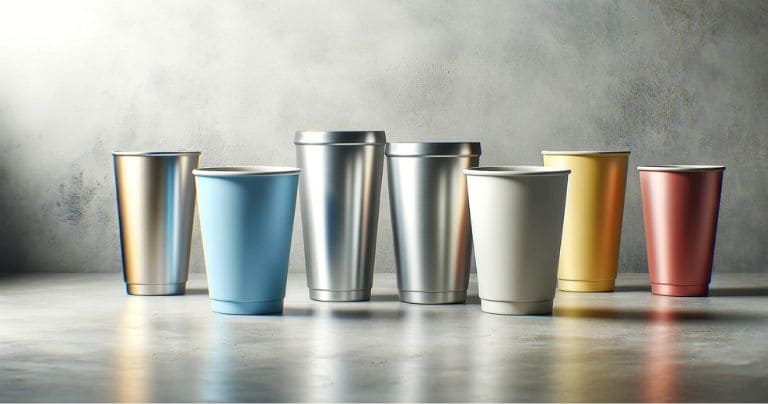
Are Aluminum Cups Truly Recyclable?
From my extensive experience in sustainable practices and materials, I can confidently say that aluminum cups are indeed truly recyclable. This fact has been a cornerstone in our product choices at Solaranook. Let’s delve into why these cups are a sustainable option and how their recyclability plays a vital role.
The Fundamental Properties of Aluminum
Infinite Recyclability
One of the most remarkable properties of aluminum, which I often emphasize to our customers and partners, is its ability to be recycled indefinitely without any loss in quality. This attribute, as I’ve learned from industry studies, sets aluminum apart from many other materials, making it an exceptionally sustainable choice.
The Recycling Process
How Recycling Aluminum Works
The process of recycling aluminum cups involves melting them down to be reformed into new products. This process, as I’ve seen in recycling facilities, is not only fascinating but also energy-efficient. The energy saved in recycling aluminum compared to producing it from raw materials is about 95%, a statistic that always astonishes me.
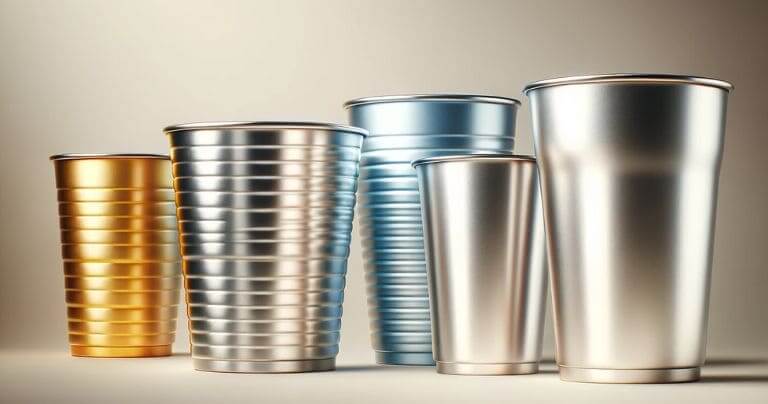
The Reality of Recycling Rates
A Gap in the Ideal and the Real
While aluminum is highly recyclable, the actual recycling rates often don’t reach their full potential. This issue, which I’ve encountered in my advocacy work, is mainly due to inadequate recycling infrastructure and lack of consumer awareness. Bridging this gap is a mission for us at Solaranook.
Overcoming the Recycling Challenges
Enhancing Collection and Sorting Systems
Improving recycling rates for aluminum involves enhancing collection and sorting systems. This improvement is something we’ve supported through community initiatives and partnerships, aiming to make recycling more accessible and efficient for everyone.
The Impact of Consumer Behavior
Educating and Encouraging Recycling
Educating consumers about the importance of recycling aluminum cups plays a significant role in improving recycling rates. Through our outreach at Solaranook, we’ve seen how informed consumers are more likely to recycle, driving up the rates of recycling and enhancing sustainability.
The Role of Businesses
Businesses also have a responsibility to promote recycling. By providing proper disposal options and educating customers, businesses can significantly influence recycling rates. This is a practice we prioritize at Solaranook, understanding its importance in the larger environmental picture.
So aluminum cups are indeed truly recyclable, and their recyclability is a key aspect of their environmental friendliness. At Solaranook, we understand that realizing the full potential of this recyclability depends on both effective recycling systems and consumer behavior. Therefore, we continually work towards enhancing both, striving to make the recycling of aluminum cups not just a possibility, but a widespread reality.

How Does Energy Consumption Compare in Aluminum Recycling vs. Production?
In my experience with sustainable materials and practices, one of the most striking facts I’ve come across is the drastic difference in energy consumption between recycling aluminum and producing it anew. This contrast is not just a detail but a cornerstone of why we, at Solaranook, advocate for recycling.
Understanding the Energy Dynamics
The Energy Intensive Nature of Aluminum Production
Producing aluminum from bauxite ore is an energy-hungry process. From mining the ore to refining it into alumina, and finally smelting it into aluminum, each step consumes a significant amount of energy. In my research, I’ve found that this process can be one of the most energy-intensive among metal production processes. According to the International Energy Agency, aluminum production accounts for a substantial percentage of the global industrial energy consumption.
The Real-World Impact
Our Experience at Solaranook
At Solaranook, we’ve seen firsthand how choosing recycled aluminum over virgin material can lead to significant energy savings. These savings are not just good for our business but are also crucial for environmental sustainability. By reducing energy consumption, we’re effectively cutting down on greenhouse gas emissions, a vital step in combating climate change.

Global Implications
On a global scale, if more industries and consumers embrace aluminum recycling, the potential energy savings are enormous. This could be a significant leap towards meeting our global energy efficiency and climate goals. As an advocate for sustainable practices, I believe that spreading awareness about this issue is key to making a tangible difference.
Moving Forward
Encouraging Recycling Practices
To capitalize on these energy savings, we need to encourage recycling practices at every level – from individual consumers to large industries. At Solaranook, we strive to educate our customers and partners about the benefits of recycling, not just in terms of sustainability but also for energy efficiency.
Innovations in Recycling Technologies
Furthermore, investing in new recycling technologies can enhance the efficiency of the process even more. As we continue to innovate, we can expect the energy difference between recycling and production to grow, further emphasizing the importance of recycling.
To sum up, the difference in energy consumption between recycling aluminum and producing it from scratch is monumental. In our journey at Solaranook, prioritizing recycling has not only been an environmentally conscious choice but also a smart energy decision. The more we can close the loop on aluminum use, the greater our strides towards a sustainable future.
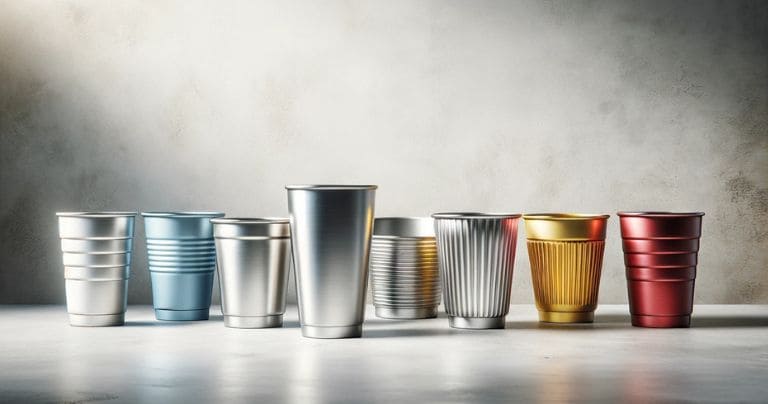
What Does the Lifecycle Assessment of Disposable Aluminum Cups Reveal?
As someone deeply invested in sustainable practices, I’ve always found Lifecycle Assessments (LCA) fascinating. They offer a comprehensive view of a product’s environmental impact, from creation to disposal. Let’s explore what an LCA reveals about disposable aluminum cups and how it shapes our understanding of their eco-friendliness.
The Journey from Production to Disposal
Beginning with Raw Material Extraction
The lifecycle of an aluminum cup begins with bauxite mining. This stage has significant environmental implications, including land disruption and energy use. I’ve seen how these factors play a crucial role in the overall sustainability of aluminum products.
Manufacturing and Use
Once extracted and processed, the aluminum is shaped into cups. This phase, while less energy-intensive than extraction, still contributes to the cup’s environmental footprint. As a business owner, I’ve learned it’s crucial to consider the manufacturing process when assessing a product’s sustainability.

The End-of-Life Scenario
Recycling vs. Landfill
The end-of-life of aluminum cups can take two paths: recycling or landfill. The environmental impact in this stage varies greatly based on this choice. In my experience, promoting recycling can drastically reduce the negative impact, aligning with what I’ve read in sustainability studies.
The Importance of Effective Waste Management
Effective waste management is crucial. At Solaranook, we advocate for systems that encourage recycling and proper disposal. This not only lessens environmental harm but also ensures that materials like aluminum can be reused efficiently.
Comparing with Other Materials
Aluminum vs. Alternatives
In my analysis of LCAs, I’ve compared aluminum with other common materials like plastic and paper. Each has its unique environmental footprint. Aluminum often emerges as a more sustainable choice, especially when recycled, due to its durability and recyclability.
Continuous Improvement
Striving for Better Practices
In our journey at Solaranook, we continuously seek ways to improve the sustainability of products like aluminum cups. This involves staying abreast of the latest research and adopting best practices in production and recycling.
To conclude, the Lifecycle Assessment of aluminum solo cups provides a holistic view of their environmental impact. From my perspective, understanding and improving each stage of this lifecycle is key to making aluminum cups a truly eco-friendly choice.

How Do Aluminum Cups Stack Up Against Other Disposable Materials?
In my years of exploring sustainable materials and products, I’ve often been asked how aluminum cups compare to other disposable cup materials. This comparison is crucial, as it helps us understand the broader context of sustainability. Let’s dive into this comparison based on my research and experience.
Aluminum vs. Plastic Cups
Environmental Impact
In my experience, the comparison between aluminum and plastic cups often centers on their environmental impacts. While aluminum cups can be recycled indefinitely, plastic cups, typically made from petroleum-based materials, are less sustainable. They often end up in landfills, contributing to long-term pollution, as I’ve learned from numerous environmental studies.
Health and Safety Concerns
From a health perspective, I’ve read concerns about plastics leaching chemicals, especially when heated. Aluminum, on the other hand, does not pose such risks when used in cups, making it a safer choice for consumers.

Aluminum vs. Paper Cups
The Misconception About Paper Cups
Paper cups are often perceived as more eco-friendly, but this isn’t always the case. In my research, I’ve found that many paper cups are lined with a thin layer of plastic to prevent leaking, which complicates recycling.
Recycling Challenges
Furthermore, the recycling rates for paper cups are not as high as one might expect. The combination of paper and plastic makes the recycling process more challenging, an issue I’ve highlighted in talks and articles about sustainable packaging.
Aluminum vs. Biodegradable Cups
The Rise of Biodegradable Options
Biodegradable cups have gained popularity as an eco-friendly alternative. From my perspective, these cups, often made from plant-based materials, represent a significant step forward in sustainable practices.
Limitations in Real-World Scenarios
However, there are limitations. Biodegradable materials require specific conditions to decompose effectively, which are often not met in typical landfill environments. This limitation is something I’ve discussed in seminars on waste management and sustainability.
A Holistic View
Considering All Factors
In making a choice between these materials, it’s important to consider factors like production impact, usage, and end-of-life scenarios. My stance, shaped by years of studying and advocating for sustainable solutions, is that aluminum cups often present a more favorable balance of these factors, particularly when recycling practices are robust.
In conclusion, when comparing disposable aluminum drinking cups with other materials, it’s evident that each has its strengths and weaknesses. However, based on their recyclability, safety, and overall environmental impact, aluminum cups frequently emerge as the more sustainable choice in my professional assessment.

How Crucial Is Consumer Behavior in the Sustainability of Aluminum Cups?
In my journey with Solaranook and our commitment to environmental sustainability, I’ve learned that consumer behavior is a pivotal factor in determining the eco-friendliness of any product, including aluminum cups. Let’s delve into how consumer actions can significantly influence the sustainability of these cups.
Initial Choices Matter
Selecting Sustainable Products
As a consumer, the initial choice of purchasing a product has a huge environmental impact. I always encourage our customers to choose products like aluminum cups over less sustainable options. This choice is a powerful statement in favor of sustainability and sets the tone for future eco-friendly decisions.
The Impact of Proper Usage
Using Products Responsibly
Once in the hands of consumers, the way aluminum cups are used can also affect their sustainability. From my experience, simple actions like avoiding unnecessary waste and reusing where possible can significantly extend the life cycle of these cups, thereby enhancing their environmental friendliness.
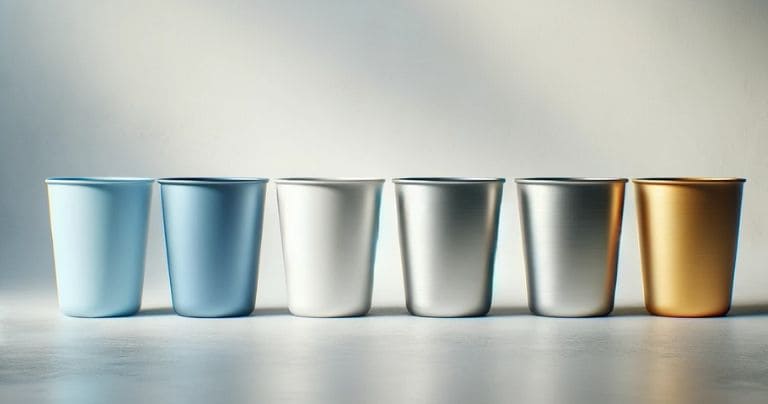
The Crucial Role of Recycling
Participating in Recycling Programs
The most critical aspect of consumer behavior, in my opinion, is participation in recycling programs. I’ve seen firsthand how effective recycling can transform the sustainability profile of aluminum cups. When consumers actively recycle, they ensure that the aluminum is reused, reducing the need for virgin material.
Overcoming Recycling Barriers
However, participating in recycling isn’t always straightforward. I’ve encountered various obstacles, from lack of awareness to inadequate recycling infrastructure. Addressing these barriers is essential, and at Solaranook, we’re committed to educating our consumers and advocating for better recycling facilities.
The Power of Consumer Advocacy
Spreading Awareness
Consumers have immense power in advocating for sustainability. Through my interactions, I’ve realized that when consumers demand more eco-friendly products and practices, companies listen. This collective voice can lead to significant environmental improvements.
Leading by Example
By choosing sustainable options like aluminum cups and participating in recycling, consumers set a positive example. This influence can ripple through communities, inspiring more people to make environmentally conscious choices.
To sum up, the role of consumer behavior in the sustainability of reusable aluminum cups is monumental. As consumers, our choices, from purchase to disposal, play a critical role in shaping a more sustainable future. At Solaranook, we recognize this power and continually strive to empower our consumers to make informed, eco-friendly decisions.

Conlusion
In conclusion, disposable aluminum cups offer a sustainable choice, primarily due to their recyclability and durability. When effectively recycled, they present a lower environmental impact compared to many alternatives, making them a viable option for eco-conscious consumers.

